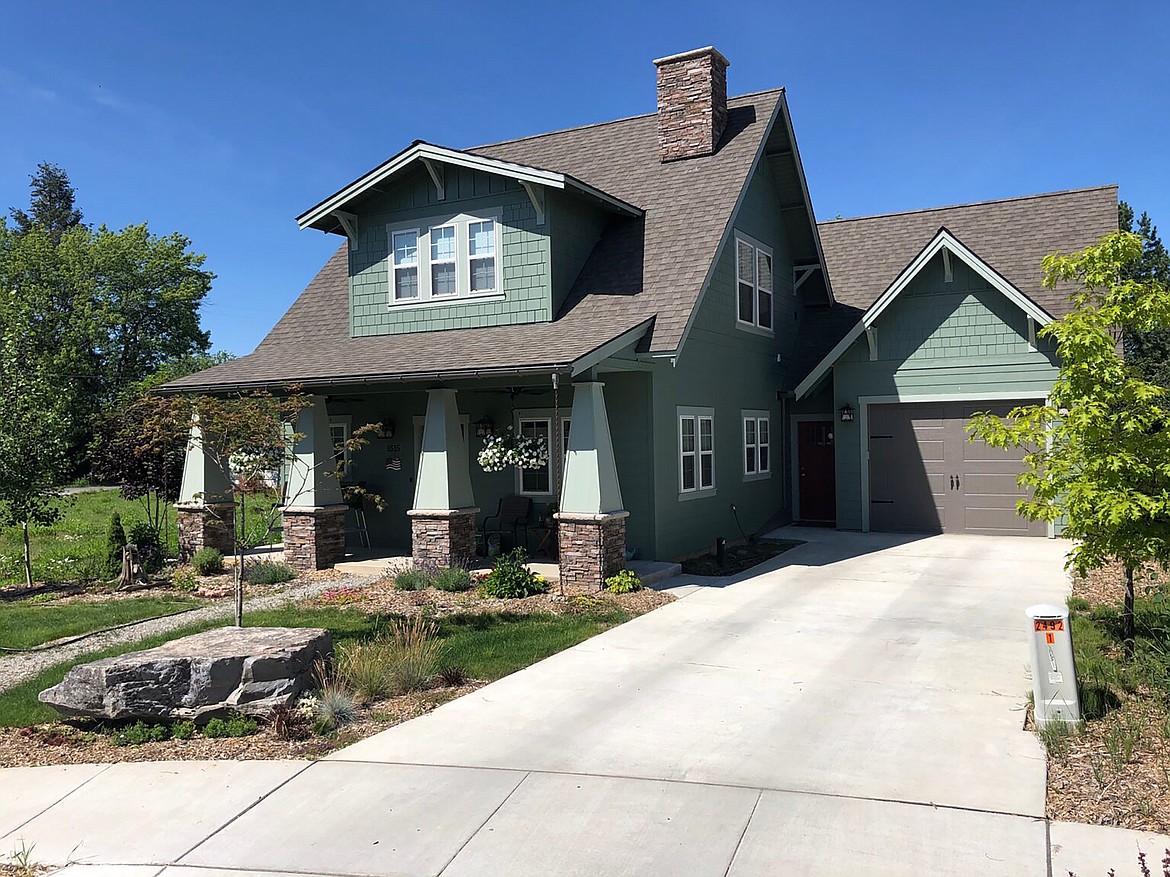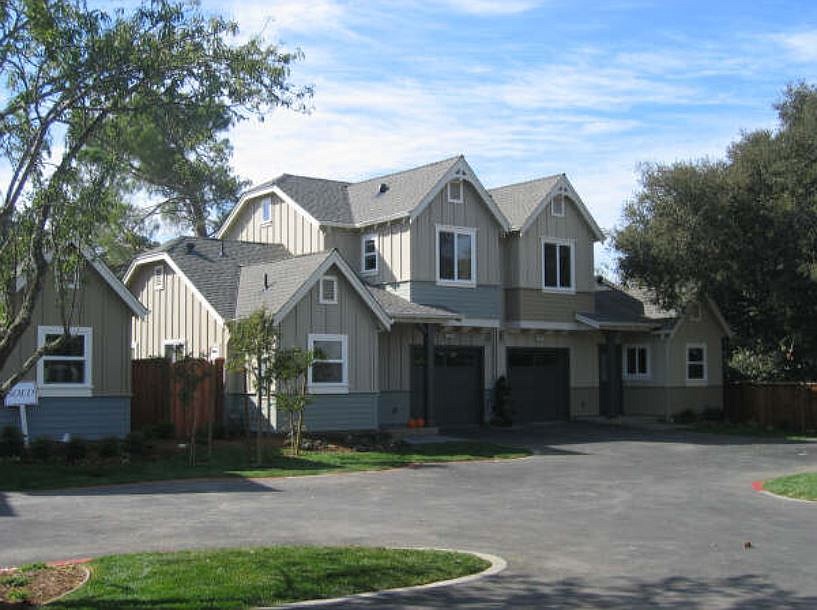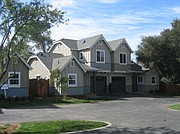BCHA seeks community partners for middle-income housing initiative
RACHEL SUN | Hagadone News Network | UPDATED 4 years, 4 months AGO
▶️ Listen to this article now.
The Bonner Community Housing Agency is looking to create a new kind of housing in Sandpoint for middle-class families who are being priced out of their homes.
The plan, which Executive Director Rob Hart introduced to Sandpoint City Council at their meeting July 7, has the agency partnering with local landowners and businesses to create a place for existing community members and new hires.
Unlike other forms of affordable housing, Hart said, the program would not rely on housing subsidies. Rather, the program aims to trim the cost and time of development for its investors, while providing housing at no more than 30% of a person’s income.
It’s built to support middle-income people who have a good job, and are having a hard time finding a place to live, he said, as well as slow the trend of out-of-state buyers snapping up any homes that might be in the average family’s price range.
“It’s this middle market where we can have the greatest benefit, because the entire region benefits when the middle class thrives,” Hart told the council.
While all housing instability is a problem, the lack of available housing for middle-income families is a new one, and could have a wider impact than previous housing shortages, said Sandpoint Mayor Shelby Rognstad.
“It's always been within reach of middle-class families, working-class families, to be able to find housing, and even own their own home,” Rognstad said. “And through that process, develop more financial security for their family and for their children. We're in a new era right now, where all of a sudden, for the first time in our history, [of the U.S., it is] not necessarily possible anymore — even in rural communities, like Sandpoint.”
Although the problem of housing for those already in poverty is an ongoing issue, Sandpoint does have subsidized Section 8 and HUD housing, Rognstad said. Providing more housing for the middle class also means less competition for other affordable housing that tends to serve people in poverty, he said.
If the market fails to support even middle-income housing, he said, it could pull families into poverty who were not previously struggling, and harm local businesses by simultaneously driving out current employees and making it impossible to attract new ones.
The city is hoping that Hart’s plan will begin to address that problem. To Rognstad, addressing middle-income housing first is a sort of “low hanging fruit” conversation — in this case, providing housing for those making between roughly 70-120% of the area median income is something that will have a far-reaching impact, and that the city and BCHA have a concrete way to address.
“This is a potential crisis in the making,” Rognstad said. “Because if we can't house those who are gainfully employed, and, and actually providing real service to our community, and actually want to be here and want to work, and then if we can't take care of those people and find housing for them, we're in big trouble.”
The plan means that instead of building housing for what the market will bear, planners will reverse engineer housing based on incomes and the goals of landowners and employers, Hart said.
It’s an idea he took from experience with similar designs working in the private sector in other states. Although it’s unique to Sandpoint, it’s been done successfully in other places, Rognstad said.
“Because we haven't done it here before, it feels maybe, to local elected [officials], or to other other leaders in the community, like a risk, because it's not something that we normally do,” he said. “But I think we're at that place now where we need to think outside the box, and we need to challenge ourselves to find more creative solutions to this problem.”
Right now, the agency is aiming to develop 20 to 30 units per year available on a limited basis for residents, Hart said. They’re on track to do that the next couple of years, but are also looking for investors in landowners and businesses.
Some plans, such as the agency’s six-acre proposed development in North Sandpoint that will be known as Culver’s Crossing, would provide a preference for residents of at least two years.
Technically, Hart said, the organization is required to accept all applications, but is allowed to give preference for applicants who are residents. With the demand for housing what it is, they’re confident they could fill the available spots with preferred applicants.
It would also provide preference for citizens in good standing, and applicants who would occupy the home as a primary residence. The housing also follows a deed-restricted housing method, and requires approved applicants to keep the home for a number of years before selling.
Other developments by BCHA, created alongside local businesses, would look to reverse-engineer housing based on monthly income at that company, Hart said, and would require proof of an offer of employment.
The program would not be limited to businesses with their own land ready for development, he said. The agency has identified land that might be used for housing, and is working to gather investors.
“If we can get 10 employers together, and each of them put up some money, a modest amount, then we have enough money to buy a good-sized piece of land and build employee housing for all of them,” he said. “We're just trying to get 10 employers together, and we're already in those discussions.”
Culver’s Crossing, the first proposed development, will include 49 homes, including single-family, townhomes, twin houses and two rental units. The land is owned by a Sandpoint native, Hart said.
As an example to the council, Hart said a sample development might include 10% single-family homes at 120% of the area median income, 20% twin homes at 80% of AMI, 60% large townhouses at 20% AMI, 5% apartments in historic settings at 100% AMI and 5% townhouses at or below 70% AMI.
To determine what home prices will be, the BCHA uses the “bedroom plus one” theory — the idea that the number of people a home can serve is equal to the number of bedrooms plus one.
“Thus, a three-person home can serve a four-person household, whether it does or not,” he said at the council meeting. “This allows us to go to the four-person column of the state median income data for Bonner County to get our area median income for that home. In this case, $64,500.”
The agency doesn’t restrict household size, he added — all are welcome provided they meet income and residency requirements.
An online survey by the city of Sandpoint, which garnered 36 responses, showed that, when asked what the maximum purchase price owners would be able or willing to pay for a primary residence, the average response was roughly $299,046. According to realtor.com, the median home listing in Sandpoint was $574,000 as of July 19.
The term “affordable housing” doesn’t always have a positive connotation, he said, but the project aims to preserve the integrity of Sandpoint neighborhoods and the environment. An example he gave is the agency’s plan to survey trees individually and design housing based on the individual landscape they’re working with.
“A lot of affordable housing is geared toward people that can't afford a home. And so those homes are subsidized, either by the state and the federal government or other sources to help people who would otherwise be unable to buy a home,” Hart said. “This program is to keep the Sandpoint community together. And to keep the people who form the fabric of the community, which are the middle-class workers, to keep them here, and to support them.”
Keeping a mix of incomes within the range of the median income also contributes to creating a cohesive community, Rognstad said. Many affordable housing projects common in urban areas at the latter end of the 20th century were socially and economically depressed, and experienced higher rates of crime and other problems.
“What has been found to be successful is to try to keep a healthy mix and diversity of income types and types of families together,” he said. “Whether it's individuals, or couples, or small families or elderly. You want to try and hit all those different parts of the community and development, particularly in an affordable project, to keep the sense of community healthy and strong.”
Because the agency is a nonprofit and designs properties in line with the city’s goal, Hart said, it also makes the approval process faster and smoother than most subdivisions.
The agency is also partially funded by the state, he said, allowing planners to consult with landowners about possible designs free of charge before those landowners commit.
“It doesn't mean we're gonna do better than market-rate housing. What it means is that we can compete with market-rate housing,” Hart said. “The landlord says, ‘Well, I go market rate, for more or less the same price, I can help the community.’ It's an easier decision that way.”
Although it’s a major first step, Rognstad said BCHA’s programs alone will not be the only way the city addresses local housing needs. Right now, he said, Sandpoint officials are in the midst of assembling a workforce housing task force.
The task force has invited Hart, as well as numerous local business owners and representatives from the housing community to participate. The city also recently conducted a workforce housing survey of 130 local employers, Rognstad said, which will help inform decisions for the task force moving forward.
“I'm really trying to hit that 70 to 80%, up to 100% of AMI, but really kind of focused on that lower half of that of that workforce housing threshold,” he said. “Businesses have a lot to gain, and a lot to lose by solving this workforce housing problem, because their very livelihood depends on it. So that'll be forthcoming.”
ARTICLES BY RACHEL SUN

Housing top priority for local businesses looking to hire
Over 60% of employers who took the survey said current housing conditions detract from the success of their business

Local group working to provide produce, meals to community throughout the year
A local group of at-home gardeners is working to make sure all their neighbors have enough to eat.

Local families invited to backpack, school supplies giveaway Sunday
Families with students are invited to TCC’s annual backpack giveaway this Sunday from 1-4 p.m. at their Sandpoint location,201 E. Superior St.



